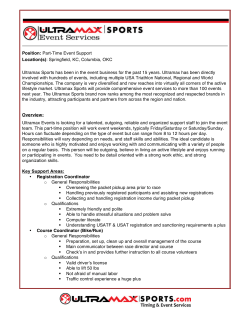
Lecture 1. Effective Business Communication: from theory to practice .
Lecture 1. Effective Business Communication: from theory to practice. Content © Alona Senishch-Chmilewsky Aalto University School of Economics, 2010 Communication: myth and reality? The Tower of Babel by Pieter Brueghel the Elder (1563) The Lord said, "If as one people speaking the same language they have begun to do this, then nothing they plan to do will be impossible for them. 7 Come, let us go down and confuse their language so they will not understand each other. Genesis 11:5-7 (Today's New International Version) What is communication? Communication is the process of understanding and sharing meaning. Components of Business Communication Communicator Cultural Context Channel Audience Message Effective communicator knows how Establish credibility Communicate his/her objectives Choose the correct style and channel Communicator: credibility i.e. your audience’s perception of you rank Common ground goodwill Credibility image expertise By French, Raven and Kotter Communicator: objectives Dear Mrs Senishch, My name is Van Chong. I'm a student from China. Last quarter I took your Business Communication course. This summer I’m planning to go home where I found an internship at my hometown (GENERAL OBJECTIVE: WHY?). The company I am applying to asks for a recommendation letter from the school. That is why I wonder whether you could do me a huge favor and issue me a recommendation letter (COMMUNICATION OBJECTIVE: WHAT?). The letter should be signed, officially sealed and sent via e-mail to chang.po@jingrecruitment.com by May, the 1st 2010. (SPECIFIC OBJECTIVE: HOW?) I truly look forward to hearing from you in the nearest future. Once again thank you for your time and effort. Sincerely, Van Chong Communicator: styles Choose your style Tell/Sell Style Informing explaining Persuading Consult/Join Style Collaborative More collaborative Channel : the way in which a message travels between communicator and audience. Speaking • Face-to-face conversation, speech, telephone conversation, voice mail,radio, TV, Voip, video conference, etc. Writing • Letters, memorandums, orders, invoices, newspaper and magazine artricles, blogs, e-mail, text messages, tweets, etc Audience Receives the message from the communicator and interprets it in ways both intended and unintended by the communicator Audience: traits Visible traits: age, ethnic origin, gender, education, occupation, socioeconomic status, culture, language fluency. Invisible traits: backgrounds, opinions, values, preferences (e.g. style, channel, format) Audience: information needs High Mixed Low Provide sifficient data, statistics, evidence needs Use handouts, appendixes information Audience: expectations Expectations Interest in the topic Bias/attitude high low positive negative Get right to the point Use consult/join style Reinforce the existing attitude (e.g.benefits) Start with the ”good news” Audience: Memory Curve Most Audience Remembers Direct Approach Indirect Approach Least beginning end message Message: direct/indirect approach Direct: stating your ideas in the beginning of the message Indirect: stating your ideas in the end of the message Message: direct approach Direct approach Nature of the message Audience’s level of interest Audience’s bias Your credibility positive high positive high Message: indirect approach Indirect approach Nature of the message Audience’s level of interest Audience’s bias Your credibility Sensitive, negative low negative low Message: structure Attention statement (optional) • To capture the attention of your audience • ”what’s in it for me” strategy Opening/Introduction • To state your general and communication objectives • ”what and why” Body • To explain action objective • ”how and when” Conclusion Complimentary part • To summorise the main points • To leave a positive impression after your communication Message: structure (sample) Salutation Attention Statement Dear Mrs Senishch, This July, you’ll be spoilt for choice with special offers on two of the world’s leading hotel chains. Opening Executive Club members can now earn double BA Miles when they stay at any Hilton Worldwide hotel between 6 July and 30 September 2010. Body If you’re planning a trip to, from or within the United States, you should be aware of their new Secure Flight programme, which requires you to supply us with some basic passenger details 72 hours before you travel. Complimen Thank you for being with British Airways. We look forward to tary welcoming you on board again soon. part Sincerely, British Airways Executive Club Culture – ”beliefs, attitudes, values and traditions shared by a group of people” Communicator Audience Culture Message Channel
© Copyright 2025


















